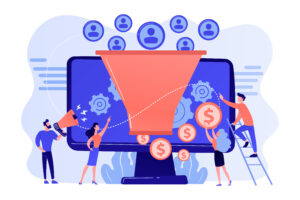Facebook Ads remain one of the most powerful tools for businesses in 2025, but targeting strategies have drastically evolved. With increasing competition, privacy restrictions, and AI advancements, the old ways of running ads no longer yield the same results.
Gone are the days when simply selecting interests or demographics was enough to drive conversions. Now, top advertisers rely on AI-driven targeting, first-party data, and behavioral engagement to stay ahead.
If you’re looking to master Facebook Ads targeting in 2025, this guide will walk you through the latest expert strategies to maximize your return on ad spend (ROAS) and maintain a competitive edge.
1. The Evolution of Facebook Ads Targeting
Over the past few years, Facebook Ads targeting has undergone a major transformation.
-
Privacy Policies Impacting Tracking:
- Apple’s iOS 14+ updates and Google’s cookie phaseout have made it harder to track users accurately.
- Facebook’s pixel-based tracking alone is no longer enough to create accurate audience segments.
-
Meta’s AI-Driven Shift:
- Facebook (now Meta) is pushing AI-based broad audience targeting instead of manual interest targeting.
- The introduction of Advantage+ Campaigns has significantly changed how ads are optimized.
-
Interest Targeting Is Less Reliable:
- Many advertisers no longer rely solely on interests and behaviors to define their audiences.
- Meta’s AI is now better at finding high-converting users than manual interest selection.
To succeed, advertisers need to embrace AI-driven targeting and leverage first-party data for more accurate ad delivery.
2. AI-Powered Targeting & Predictive Audiences
One of the biggest advancements in Facebook Ads targeting is Meta’s AI-powered audience selection.
Instead of manually selecting narrow audience segments, advertisers now let AI optimize targeting in real time.
How AI-Driven Targeting Works in 2025:
-
Advantage+ Audience Optimization:
- Meta’s AI automatically identifies high-converting users based on past ad engagement.
- Advertisers provide a broad audience, and Meta refines targeting dynamically.
-
Predictive AI Modeling:
- Facebook’s AI analyzes user behavior and serves ads to users most likely to convert.
- This is done using real-time engagement tracking rather than pre-set demographics.
-
Experts’ Take on AI Targeting:
- Many advertisers report higher ROAS using broad AI-driven audiences vs. traditional interest targeting.
- The key is to feed Meta with high-quality data and let AI optimize your reach.
3. Leveraging First-Party Data for Hyper-Targeting
With privacy changes limiting tracking capabilities, advertisers must rely on first-party data to build accurate audiences.
How to Use First-Party Data in Facebook Ads:
-
Custom Audiences from Website Visitors:
- Use Facebook’s Conversions API to track site visitors without relying on cookies.
- Retarget users who visited high-intent pages (e.g., pricing pages, product demos).
-
Customer Email Lists & CRM Data:
- Upload customer lists to Facebook and create highly segmented Custom Audiences.
- Example: Separate lists for VIP customers, repeat buyers, and one-time shoppers.
-
Lookalike Audiences from High-Quality Sources:
- Instead of creating general Lookalike Audiences, generate them based on highest-value customers.
- Example: Create a 1% Lookalike of your top 5% of buyers rather than all past customers.
By integrating first-party data, advertisers can maintain precise targeting despite external tracking limitations.
4. Behavioral and Engagement-Based Targeting
In 2025, one of the most powerful ways to build high-converting audiences is by targeting users based on their actual engagement.
Best Engagement-Based Targeting Methods:
-
Video View Audiences:
- Retarget users who watched 50%+ of your video ads.
- This indicates high interest and pre-qualifies potential customers.
-
Lead Form and Poll Engagement:
- Facebook allows you to retarget people who engaged with lead forms or polls.
- These users already showed intent, making them prime candidates for conversion.
-
Reels and Stories Engagement:
- Since Facebook Reels and Stories are growing in popularity, targeting engaged viewers can be highly effective.
- Use audiences based on users who tapped, swiped, or clicked on your Reels and Stories.
By using real-time engagement data, advertisers can ensure higher intent audiences and improved conversion rates.
5. Interest + Demographic Layering for Precision Targeting
While interest targeting alone is becoming less effective, combining it with demographic and behavioral data can refine your audience selection.
Expert Strategies for Interest Targeting in 2025:
-
Stacking Interests for Niche Targeting:
- Instead of choosing broad interests, layer hyper-relevant niche interests.
- Example: Instead of targeting “Fitness,” try “High-Performance Training” + “Wearable Tech”.
-
Using Demographics to Narrow Interest Audiences:
- If targeting business owners, specify age range, job titles, and behaviors for better accuracy.
- Example: “Small Business Owners” + Age 30-45 + Engaged Shoppers.
-
A/B Testing Hidden Interest Segments:
- Many interest segments are not obvious—testing less saturated segments can unlock hidden audiences.
- Example: Instead of “Luxury Cars,” test “Luxury Travel Enthusiasts” for high-net-worth individuals.
By strategically layering interests and demographics, advertisers filter out irrelevant traffic and improve ROAS.
6. Facebook’s API-Driven Targeting Solutions
For advanced advertisers, Meta’s API solutions provide deeper audience insights and targeting capabilities.
How to Use API Targeting in 2025:
-
Server-to-Server Tracking (Conversions API):
- Tracks website visitors more accurately than the Facebook Pixel.
- Helps create better Custom and Lookalike Audiences.
-
AI-Assisted Targeting Through Meta’s API:
- Large advertisers use API connections to fine-tune audience signals.
- Example: Automatically updating audiences based on user purchase behavior.
-
Predictive Targeting with AI Signals:
- Meta’s API allows advertisers to feed high-intent signals for more precise ad delivery.
7. Future-Proofing Your Facebook Ads Strategy
To stay ahead, advertisers must continuously test and adapt.
-
Shift Toward AI-Optimized Audiences:
- Broad AI-powered targeting is becoming the standard for higher-performing ads.
-
Expand Ad Formats to Capture More Data:
- Using interactive lead forms, Reels, and video ads helps build engagement-based audiences.
-
Analyze Data & Optimize Regularly:
- Frequent A/B testing of audience types ensures consistent performance improvements.
By adopting these expert targeting strategies, businesses can maintain effective Facebook Ads campaigns in 2025.
Facebook Ads targeting has drastically changed in 2025. With AI advancements, privacy shifts, and new audience tools, advertisers must move beyond traditional interest targeting.
By leveraging AI-driven optimization, first-party data, and engagement-based targeting, you can stay ahead of the competition and achieve better conversion rates.
Want expert help with Facebook Ads targeting? Start implementing these strategies today and watch your ROAS improve!
At Create The Movement, we don’t just market—we build powerful brand experiences that drive results. Whether you need high-converting Facebook Ads, cutting-edge digital strategies, or a complete brand transformation, we’ve got you covered.
Book your FREE consultation today.











